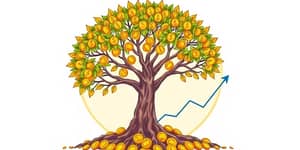In a landscape where average returns no longer satisfy, high-yield investments offer a compelling route to enhanced income and capital growth. Yet, the allure of superior returns often comes hand in hand with elevated risk. This guide will illuminate the path to uncovering prime opportunities, equipping investors with the knowledge and tools needed to navigate volatile markets and maximize potential rewards.
Understanding High-Yield Investments
At its core, a high-yield investment delivers returns that exceed market norms, but such rewards are seldom free of risk. These vehicles include high-yield bonds (often termed “junk” bonds), lower-rated corporate debt, and certain equity instruments known for generous dividend distributions. By recognizing the nature of these assets, investors can balance pursuit of return with prudent risk controls.
Common high-yield avenues include:
- High-yield bonds issued by lower-rated corporations
- Emerging market bonds subject to currency and political fluctuations
- Preferred and convertible securities mixing debt and equity traits
- Dividend-focused stock funds and small-cap equity portfolios
- Specialized real estate in high-growth markets
Criteria for Identifying Opportunities
Finding exceptional high-yield options hinges on a structured evaluation framework. Begin by hunting for market inefficiencies where asset prices stray from intrinsic values—often a fertile ground for outsized returns. Undervalued sectors or companies under temporary stress can present attractive entry points for discerning investors.
Rigorous quantitative measures are indispensable. Key metrics include:
- Price-to-Earnings Ratio: Comparing P/E against industry standards reveals undervaluation.
- PEG Ratio Below One: Suggests growth potential priced attractively.
- Return on Equity Levels: Gauges management’s ability to generate profit.
- Debt-to-Equity Ratios: Highlights leverage and financial stability.
- Free Cash Flow Analysis: Indicates operational health and flexibility.
Beyond numbers, apply qualitative analysis. Assess management track records, corporate governance, and sector headwinds or tailwinds. Industries tied to transformative trends—such as renewable energy or digital infrastructure—can yield exceptional opportunities when valued judiciously.
Examples of High-Yield Assets and Trends
To contextualize yields and risks in today’s environment, the following table summarizes prominent high-yield asset classes:
These figures reflect broad market conditions and are subject to change. Awareness of risk dimensions is critical before allocation decisions.
Systematic Identification Process
Adopting a disciplined approach enhances your ability to unearth hidden gems while managing downside. Follow these steps to build a robust research routine:
- Screen with Institutional Tools: Utilize platforms like Bloomberg or FactSet to filter by valuation, profitability, and financial health.
- Conduct Deep Dives: Examine financial statements, quarterly reports, and footnotes to validate growth drivers and debt loads.
- Analyze Macro Trends: Monitor interest rate cycles, demographic shifts, and regulatory changes that may influence sectors.
- Track “Smart Money” Flows: Review fund holdings and insider transactions to spot potential outperformers.
- Monitor Continuously: Reassess positions against changing market conditions to avoid “chasing yield” in deteriorating assets.
Managing Risk and Diversification
While the promise of elevated income streams tempts many, prudent investors temper ambition with risk controls. Diversify across:
- Asset classes: combine bonds, equities, and alternatives
- Geographies: balance developed markets with emerging regions
- Sectors: rotate exposure among technology, healthcare, and consumer goods
Always evaluate liquidity profiles—certain high-yield bonds or small-cap equities may prove difficult to exit in turmoil. Consider setting stop-loss thresholds or hedging credit exposure via derivatives in complex portfolios.
Common Pitfalls to Avoid
Beware of chasing the highest quoted yield without a full understanding of underlying risk factors. Unsustainable dividend policies, stretched balance sheets, or opaque financial disclosures are red flags. Overconcentration in any singular issuer or sector can amplify losses during market downturns.
Engage in regular portfolio reviews, applying quantitative metrics as early warning signals. When a bond’s credit rating deteriorates or a company’s cash flows plunge, decisive action can preserve capital and maintain portfolio integrity.
Conclusion: Charting a Path to Elevated Returns
Identifying high-yield investment opportunities demands a marriage of rigorous analytics and informed intuition. By blending quantitative screening with qualitative judgment, investors can unearth promising candidates while managing the inherent risks. Remember to:
- Screen methodically with robust metrics
- Diversify across classes and regions
- Monitor portfolio health continuously
- Adapt swiftly to market shifts
Ultimately, disciplined research and dynamic risk management transform the pursuit of higher yield from a gamble into a calculated strategy. Armed with the frameworks and examples provided, you are now better equipped to seize the opportunities that lie beyond conventional returns.
Embark on your journey with confidence, leveraging insight, creativity, and vigilance to build a resilient portfolio poised for superior yield generation.
References
- https://www.circle-economy.com/resources/how-to-identify-high-impact-high-return-investment-opportunities
- https://www.commonwealth.com/insights/identifying-investment-opportunities-how-the-experts-do-it
- https://dailyiowan.com/2025/01/17/how-to-identify-high-return-investment-opportunities/
- https://scrambleup.com/knowledge-base/identifying-potential-investments-what-are-they-and-how-to-find-them
- https://www.bankrate.com/investing/best-investments/
- https://smartasset.com/investing/high-yield-fixed-income-investments
- https://authorservices.taylorandfrancis.com/publishing-your-research/writing-your-paper/writing-a-journal-article/
- https://microequities.com.au/how-to-identify-investment-ideas/










